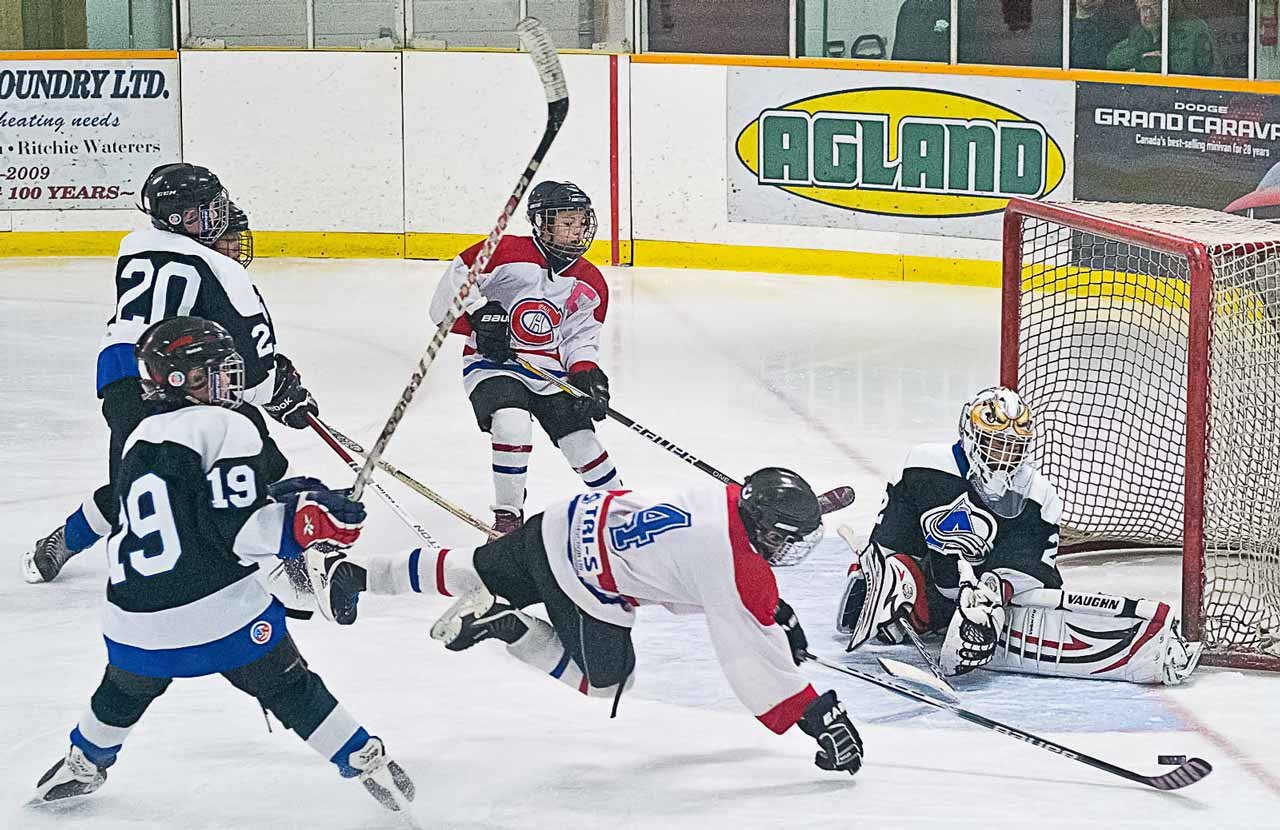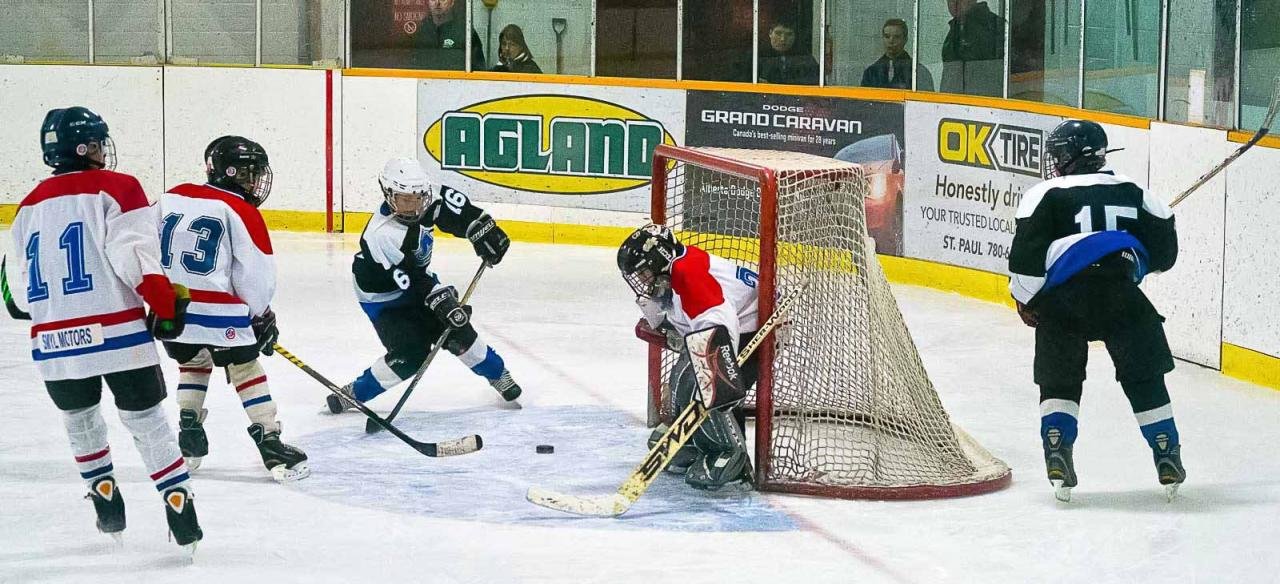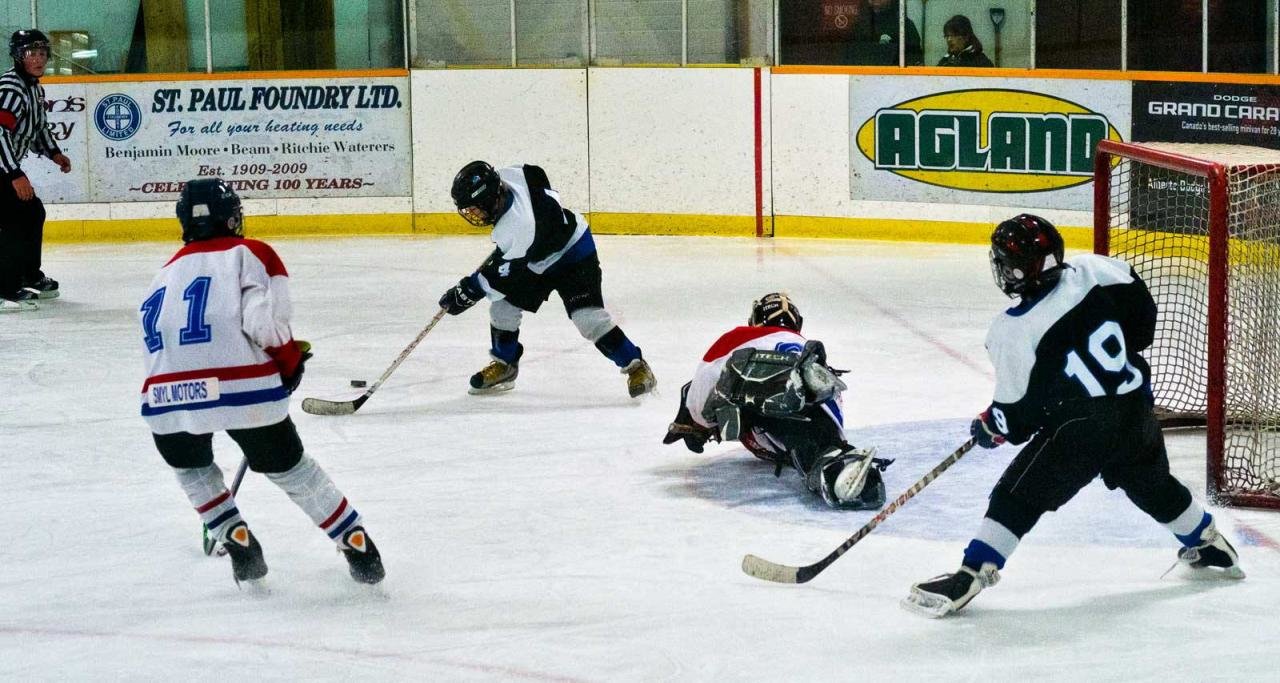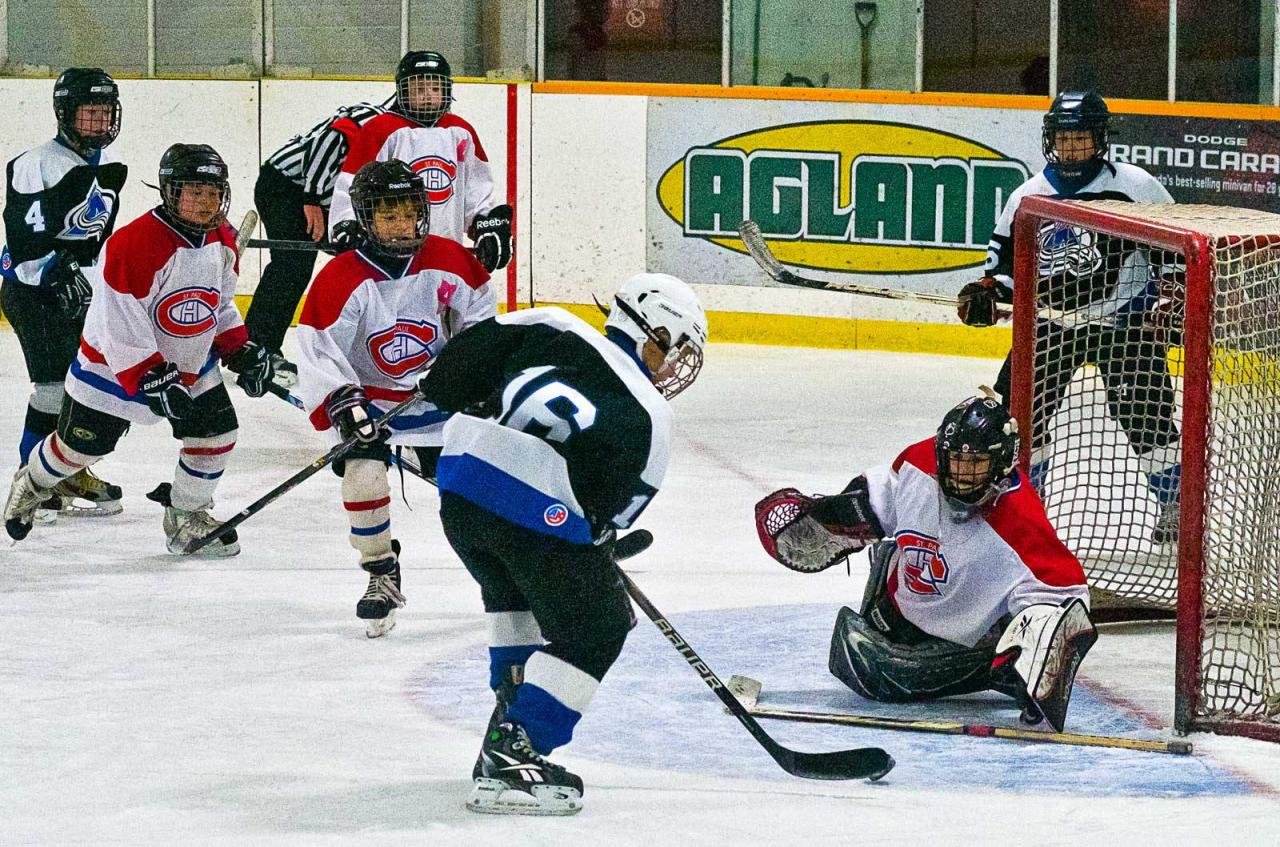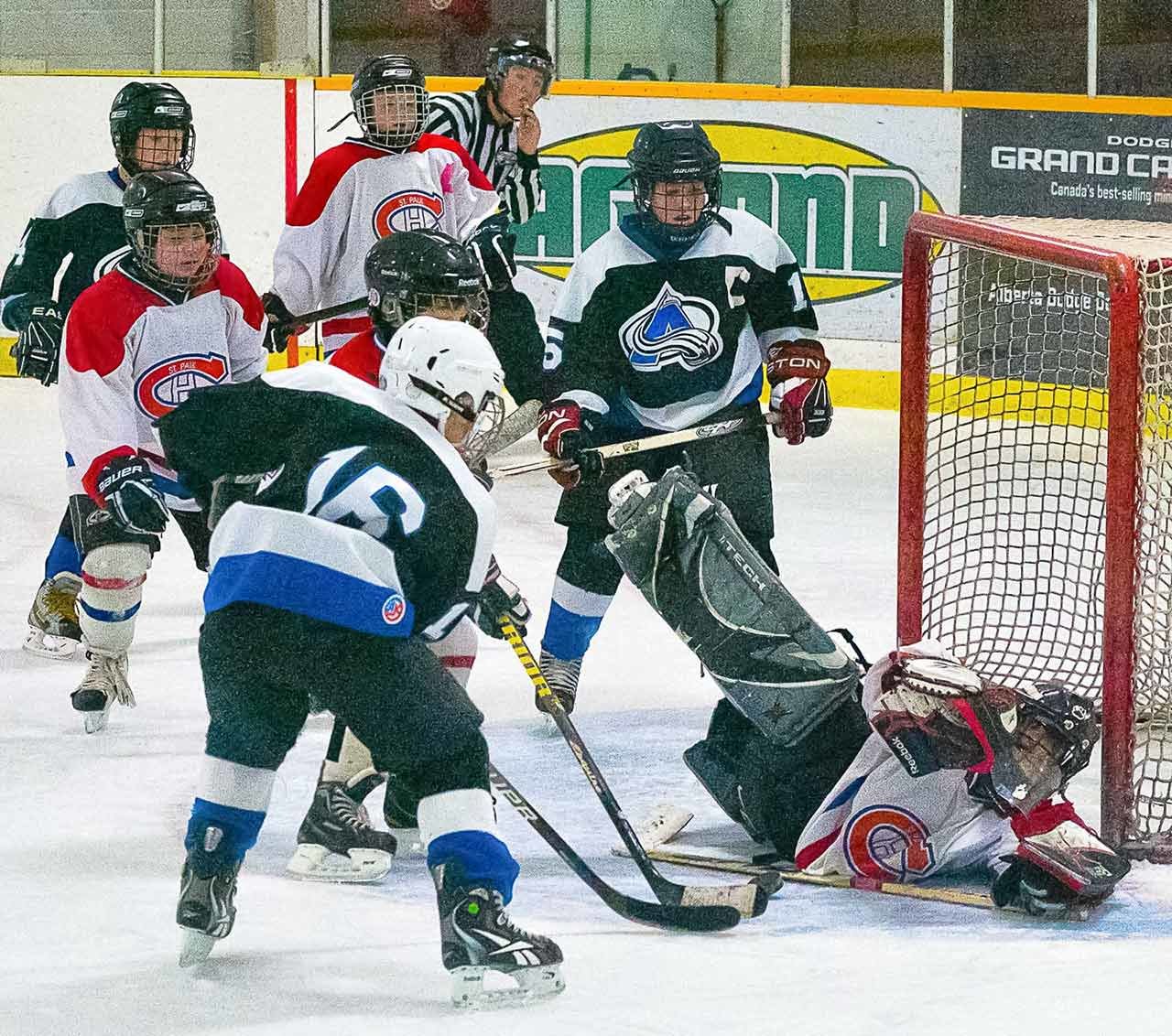-
Posts
195 -
Joined
-
Last visited
-
Days Won
5
Content Type
Forums
Gallery
Store
Everything posted by Larry Bolch
-
Don't worry—the target customer is entirely different. Downgrading the current line would have no effect on the market for the medium-format line. The top X-cameras are well under $2,000US where the medium format cameras will be well above $5,000US. The sensor alone is reported to be $5k wholesale. It is supposed to be cheaper than the recent Hasselblad which is currently selling for $9,000. While most of the X system lenses are under $1,000, the 35-90mm f/4-5.6 zoom lens that Fuji makes for Hasselblad sells for $8,560.00. Primes are somewhat less but still aimed at working photographers.
-
Every camera company has their own way of creating a user interface. Without a doubt, the fastest way to get up to speed is a comfy chair and the manual in one hand and the camera in the other. Try everything. No matter if you are just photographing the corner of the room, this is about camera operation, not photography. The more fluent you become with the new camera, the more fun you will have. I shoot both, and give a slight edge to Fujifilm over Nikon for logical design of controls and menus.
-

Hotshot french flag? Where can I find one?
Larry Bolch replied to Pompo's topic in Fuji X-T2 / Fuji X-T20
I am sooooooooooooooooooo amused! -
Perhaps a difference in experience. With thousands of images copied vs thousands of images scanned, with me batch scanning wins. For you, the camera may be the most efficient way. I expect that the optics in my device may be substantially inferior to the optics in my scanner so camera image quality can not match my old scanner. It is an ancient device—but it DOES work. Setting the white balance on some slides where the emulsion did not match the colour temperature were corrected reasonably well using the white balance on the X-Pro1. My scanning software also has an auto setting that gets one close. Both have fine tuning if one wants to use it. However, the fine tuning is more easily done after the scan/exposure. Exposures were reasonably accurate, and the EC knob was able to produce a pretty decent histogram. My device is ancient, and presently there may well be units with optics that we expect now. However, given a stack of images to scan, using this device would be far slower than my old scanner, not even counting the time spent in processing. The big difference would be in batch scanning. Negatives would be difficult to handle with my camera-mounted device and it would require cutting the film and mounting each exposure into slide mounts. The frames that came with my old scanner accommodate four strips of six exposures, and negative scanning is as easy as scanning chromes. Software handles the reversal.
-
Sensor resolution will continue to increase, not because it is needed, but because that is the nature of digital engineering. It is 4896 vs 6000 pixels wide, only a 22% difference. There would be a bit more potential for detail, but only noticeable on direct comparison. All else being equal, a large print from a 24MP image exhibited next to a 16MP image may show a bit more detail if viewed at reading distance. Viewed at normal viewing distance, or viewed alone, you would not notice. In the real world of photography, "all else" is rarely equal.
-
Much experience with slide-copy equipment, both with film and with digital. Even with the greatest of care, results have been lacking with the exception of an elaborate copy device at a place where I worked decades back. I still have a slide copy device similar to the one illustrated in the first post. It has built-in optics—no need for mounting on a lens—and it zooms. The slide holder slides up and down and rotates for cropping—pretty high-end. With a Nikon adapter, it works on my X-Pro1. I just gave it a try and found it awkward to use, one slide at a time inefficiency, unimpressive results. In the past, I also tried using a macro lens with a white reflective panel behind the slide. Precise alignment was frustrating, manually dealing with the slides themselves was slow, and getting even lighting was a problem. I know that scanning was stated as non-viable by the OP, but that was my solution—if I may please elaborate on my experience. Many years back, I really wanted a medium-format Nikon slide scanner, but could not afford it. At 1/6th the price, a top-of-the-line Epson 4870 got great reviews, but it was a flatbed, and everyone knew flatbeds were useless in this role. With immense regret, I eventually carried one home. I had very low expectations. I was blown away by it. I could drop eight slides into the scanning frame and they were aligned. I could set an individual exposure and white balance for each image individually, hit the "Scan" button and walk away. Whether scanning into Paint Shop Pro or Photoshop, when I came back, there were my images. I could also switch to another application and scan in the background. It also worked very well for negatives doing the reversal just by choosing "negative". It handled all sizes of film up to large format. If time has value, the scanner paid for itself quickly. Batch scanning is extremely efficient. A dozen years later, it is still one of my most used peripherals. It does flawless scanning of documents and prints. It does a decent job of optical character recognition. Above all, it does a really good job of scanning my legacy film images. Prints from scans meet or exceed the quality of what I did in the fume-room, in just a fraction of the time it took back then. Scanner and photo inkjet are vastly quicker and better than enlarger and colour processor. I brought along a few prints to a gathering of working photographers shortly after getting the machine. The unanimous opinion was that they were from drum scans. Everyone was astounded that they were from a flatbed! At least one of the shooters gave away his Nikon 35mm scanner and replaced it with an Epson. Advantages—one can scan to the precise size and resolution needed. DigitalICE does a great job of removing dust and scratches and even helps with damaged prints at the cost of slower scanning. It has a restoration setting that works very well with faded colour prints. EpsonScan software in "pro" mode is logical, easy to use and simply does the job. LaserSoft Imaging SilverFast software was included, but in spite of being a rather pricey inclusion, I found that it was user-hostile to the point that I abandoned it. I have no idea if the current version is more usable—I would hope so. As with anything digital, there have been timely upgrades. The current machines are faster, have no warm up time and can handle a dozen slides in a batch, along with 18 35mm negatives and up to 8×10 sheet film. Fluid scanning is available. Current models may have somewhat higher resolution and greater dynamic range now. However, my dozen-year-old machine still delivers very high quality with great efficiency. As long as it continues to work, I feel no need for the most up-to-date replacement. If it did fail, I would replace it with the current high-end model without hesitation. The much less expensive consumer-level scanner has similar resolution and capability, but much less area for transparency scanning. For the OP's purposes, it might do the job sufficiently. Compared to using a camera, it is a big time-saver and eliminates all frustration.
-
Lovely for portraiture. Shot a bunch over the weekend. Super lens for hockey. From the boards on one side, I focused upon the goal and did a test shot or two. At f/4.0 the boards opposite were in focus. In the foreground, the players were in focus until they over-ran the frame. I shot from just inside the blue line at one end and centre ice was still in focus. Absolutely no need for autofocus. Not one single frame culled due to lack of sharpness. Using zone focus, the camera was very responsive. Beyond centre ice, 60mm was a bit too short. With the OVF, my X-Pro1 was a dream camera. I could not only see what was in the frame, but what was developing outside the frame, increasing my keeper rate significantly. This would be the ideal rig for basketball, volleyball, gymnastics and any other indoor sports. I greatly appreciate my autofocus when it is appropriate. However, manual focus is there for a reason, and many subjects best lend themselves to it. Ballistic toddlers in full-lurch are often mentioned as impossible. Very simple—zone focus again. At f/5.6-8.0 you are using the lens at its sharpest, and the zone is wide enough to easily enclose your high-velocity crumb-snatcher. Keep a reasonably consistent distance, and keep shooting. There is no need whatsoever to actually focus on the kid. Everything in the zone will be sharp. The 60mm lets you keep a comfortable distance and still get tight detail.
-
The 18-55mm unfortunately, is the equivalent focal length of many camera maker's kit lens and so all too often is referred to as such. It is a misnomer since it is on par with the rest of the Fujifilm zooms. It just covers the same popular range in its fields of view. Safe to choose whatever lens meets your criteria. Fuji has yet to release a dud. While Fujinon lenses are relatively new to the consumer marketplace they have a long history in the industry. Superb medium and large format lenses as well as lenses for cinema and video production. I just checked the B&H Photo Video web-site and they list 81 different pro-video lenses ranging in price from $3,900 to their top line 101× zoom for $233,490.00. Fuji knows glass! F/1.4 lets in double the light of an f/2.0. In very low light it means 1/60th of a second instead of 1/30th. Realise that the Fuji cameras work very well at high ISO settings. The noise that does exist is quite film-like and can be reduced in processing. Most of what I shoot is indoors in low light and the results are highly acceptable. I will happily accept a bit of noise for sharp detailed images rather than a silky blur.
-
Can you just imagine how disturbed they would be in the film era? When the roll was done in 24-36 exposures with 35mm or with 8, 10, 12 or 16 with medium format 120 rolls, and they would have to stop and spend minutes changing film? Now with batteries providing 200 to 500 exposures, they lack the foresight to recognise a five-second pause to change batteries. Hey, you don't have to absolutely exhaust the current battery before you change it! When the indicator shows you are getting low, pick a pause and insert a fresh battery. If you are obsessed by that few second pause, perhaps counselling is in order.
-

Why Fuji should release a video based camera
Larry Bolch replied to keylight's topic in General Discussion
At this moment B&H is showing 81 different video broadcast and production Fujinon lenses compared to the 21 for the X-system. They range in price from $3,900 to $233,490.00US. If Fuji wanted to build a video camera, would this not be the better market? Since they don't have a camera in this marketplace by now, I expect they are happy just making Fujinons. With quite a number of enthusiast-level camcorders on the market that were designed for comfortable movie-making, it seems like a bit of a waste to bring a still camera up to full video specifications. For just under $700US you get a 4K video camcorder with a 20× optical zoom ready to head into the field. B&H lists their highest priced enthusiast video camera for $2,698.00. There is a Sony that uses interchangeable lenses in Sony A and E mounts for $2,899.00. Within these parameters there is a wide variety of equipment with loads of features from which to choose. All are designed primarily for video. Basing a hybrid still/video cam on the chassis of a still camera could not help but come up a camel—horse designed by a committee. A substantial third-party industry has sprung up to rig and support dSLRs so they shoot somewhat like real video cameras. I just can not see Fuji coming up with a profitable solution. http://www.bhphotovideo.com/c/search?Ns=p_PRICE_2%7c1&ci=3926&setNs=p_PRICE_2%7c1&N=3907816577&srtclk=sort -

Xpro 2 no panoramic
Larry Bolch replied to Gordo55's topic in Fuji X-Pro 1 / Fuji X-Pro 2 / Fuji X-Pro 3
Further to Photoshop's pano tools, a couple of hours ago, I stitched a test panorama shot with my X-Pro1 and Samyang 8mm fisheye. I shot it spur of the moment, handheld and only four exposures to over 180°. Some small errors in stitching that a couple more exposures would have fixed. The boundary warp filled in the rectangle very realistically and applying the lens/camera profile rendered the fisheye curvature as rectangular. I also successfully shot with the panoramic feature of the X-Pro1 and the fisheye, but it did take a few tries before I got smooth results, even shooting off a tripod. Adobe Camera RAW makes it easier, and you have all the adjustment before or after the merge. With the content aware capability now, no special pano head or robot is needed. I have used it to stitch many hand-held panoramas, with no problems whatever. Neat to be able to do it in-camera, but much more difficult. Worse you are stuck with a JPEG panorama, while ACR works with .raf files and generates a .dng RAW file. I shot a lot of film panoramas with my Panon WideLuxe 140, so was delighted to have the feature in my Fuji cameras. However, ACR has made the feature obsolete for me. -
If it is expired and the seller makes clear it is expired, then the buyer has enough information to make a reasonable decision. During the past century, it was not uncommon for camera stores to have a bin of expired film for sale. However, it was generally priced accordingly.
-

JPEG File Size
Larry Bolch replied to b4il's topic in Fuji X-E4 / Fuji X-E3 / Fuji X-E1 / Fuji X-E2 / Fuji X-E2s
Nothing whatever useless about it! Simply change the figure to whatever you want in any image editor. Set it for 300,000 pixels per inch/dots per inch if you wish. It makes absolutely no difference whatever. A 4896 x 3264 pixel image has exactly the same picture data at 72 ppi as it would have at 300k. The only difference is a meaningless variable. Only printer drivers understand dpi/ppi. They and they alone use that figure to fit 4896 x 3264 onto an 8×10 or 30×40 sheet of printing paper. Monitors know nothing about dpi/ppi. The Internet knows nothing about dpi/ppi. Slide-show viewers know nothing about dpi/ppi. Image editing programs only understand dpi/ppi when you do a Ctrl-P to print. There is no visible difference in an image that is 7.2, 72 or 720 dpi/ppi as long as it has the dimensions of 4896 x 3264. Zero visible difference. An image straight out of the camera at 72 dpi/ppi is precisely the same resolution as one that is 300 dpi/ppi as long as the pixel dimensions are equal. -

Xpro 2 no panoramic
Larry Bolch replied to Gordo55's topic in Fuji X-Pro 1 / Fuji X-Pro 2 / Fuji X-Pro 3
One of the Fuji guys to the best of my recollection hinted that it may arrive with a firmware upgrade. I have used it successfully with the X-Pro1 in the past, but with the power and ease of the tools in the latest version of Photoshop, I have probably used it for the last time. -
Rangefinder style cameras leave your left eye unblocked, so you have the option of shooting with both eyes open using actual rangefinder technique. Traditionally, frame-lines in the optical finder have been only an approximation of what you are photographing. This was fine in the golden age of photojournalism with the emphasis on the "decisive moment". The shooter routinely did the composing in the darkroom while making the print. Of course, this did not work once colour publishing began to flourish and slides became the standard medium for publications. Thus the rise of single lens reflex cameras with accurate viewing. With rangefinder style cameras, float the frame-lines around the subject and grab the image when the moment is right. Use your left eye to look for detail and determine timing as necessary, ignoring the lens in the viewfinder. Realise you are looking THROUGH the camera, not into it. With an SLR or the EVF, you are watching a movie projected or recreated on a screen inside the camera. It is a bit more detached than viewing the subject directly and is tempting to dwell on composition and so on. The X-Pro cameras give you both worlds.
-

Why Fuji should release a video based camera
Larry Bolch replied to keylight's topic in General Discussion
Even though the semi-obligatory 4K feature is included in the X-T2, Fujifilm's attitude has consistently been that X-cameras are primarily for stills. I would not infer that 4K is indicative of a growing interest in meeting your needs. Any camera with LiveView automatically has a video feed. The new cameras have 24MP sensors and a more powerful processing engine and video is simply a side benefit. Realise that bridge cameras in the very beginning offered video. It is a "free" feature that will not be going away, but will not necessarily be receiving the attention you need—and I fully understand your need. Cheap clients have no interest in understanding how awkward it is for one to shoot both at the same time. They expect a top "professional" product for barely a "good enough" price. Red is lovely and Arri is even more so. However, there is a new generation of quite affordable equipment that is not your Daddy's vacation camcorder. These are designed with the same specialised vision as the X-cameras, except they shoot video instead of stills, but in the most efficient way. Eight years ago, the dual purpose camera was the hot idea. Now, not so much. Realise that video is not going away with still cameras, but the new has worn off. Evolution will be incremental following the growth of technology. Occasionally someone will do a bit of a push in the video line (Sony Alpha 7S), but for the most part, no. Clients need educating—photographer + videographer. No help for you at the moment, sorry. Fuji has a huge presence on the industrial-level of video production, however. B&H in New York City lists 81 video Fujinons ranging from an entry level $3,900.00 all the way to a stratospheric $233,490.00 for a 101× zoom. Fuji is clearly into video in a big way, but not with their prosumer mirrorless cameras. Who knows what the future may bring. They certainly have the expertise to build a dual purpose camera, but I expect the demand is low—you and the guy beside you. -
The problem is not new to digital and was much of a bother with medium-format. At its smallest with 120 and 220 film, there was 4.5×6cm, and many 6×6 cameras. Next up was 6×7 which was common, 6×8 which was primarily the Fujifilm GX680's exclusive size, 6×9 was also very popular, my Brooks VeriWide 100 was 6×10, Linhof and Horseman made 6×12, Linhof and Fuji both had 6×17 cameras and someone made a 6×24! A normal lens on a 6×9 would be a very wide angle on a 6×17 and a telephoto on a 6×4.5. We carried printed charts with equivalency focal lengths.
-
In the early days of digital, there were many sensor sizes and they were all named after analogue TV camera tube sizes like 1/2.33" at the small end and 2/3" for the expensive bridge cameras. Then there were APS-C and APS-H sensors named after a failed film format, and followed by four-thirds and micro four-thirds. Perhaps some early adopters bought digital as their first camera, but most came from a background in film where 35mm dominated. Even large format shooters were well aware that a 35mm lens was a wide normal, 85mm a portrait of short telephoto lens, 24mm was genuine wide-angle and so on. My first camera had a 1/1.8" sensor whatever that meant, and an 8.2 to 23.4mm zoom. No way that one could visualise an 8.2 to 23.4mm range, but when translated to the familiar 38 to 115mm equivalency, we were at home on familiar territory. My second camera had a 2/3" sensor, so focal lengths would be entirely different. Equivalence was necessary for clarity in those days, and for better or worse, the custom stuck.
-

Do we have any X-users using their X cameras for sports?
Larry Bolch replied to Shashinka Ichiban's topic in Sports
I had a chance a couple of years back to photograph a hockey game in a remote northern town. The light was minimal, but by pushing a stop in processing was adequate. Thye X-Pro1 and the 60mm f/2.4 was a wonderful combination. With the optical finder, I could see what was happening outside the image frame and make instant adjustments. Zone focus at f/4.0 gave me sharpness from the boards opposite to the point where the players over-ran the frame. Ideal combo for hockey. -
In comparison to most of its competitors, Fuji does rather well. I did a survey of contemporary mirrorless cameras and the results are Sony Alpha 7R II - 290 Olympus PEN-F - 330 Panasonic Lumix DMC-GX8 - 330 Fujifilm X-Pro2 - 350 Sony Alpha a6300 - 400 Small cameras with small batteries and limited lifespans. However, it takes only a few seconds to change a battery. Remember film? it took a couple of minutes to change a roll of film and you only got 12-36 shots.
-
I could only find one shot of the back of a Hasselblad lens and it is flatly lit, so no universal truths are implied. However, it looks in this picture that the shallow flange distance is overcome by keeping the optics well forward in the mount. The rear element seems to be some distance from the actual bayonet.
-
Any camera can do a fine job on ballistic toddlers if you use zone focus. The f/2.0 35mm lens is at its peak of sharpness like most lenses, in the f4/0 to f/8.0 range. Set to f/5.6-f/8.0 you not only are taking advantage of the optimum aperture for quality but also generating a generous depth of field. There is no need to focus directly on the kid. As long as they are in the zone, they will be sharp. Mode to manual focus. Tap the AF-L button with the kid as the target, then use your feet to keep a roughly similar distance. Since the camera no longer has to refocus for every exposure, it becomes much more responsive. Zone focus is an excellent solution to almost every action photograph that takes place at roughly a given distance. Great for sports too. Good light is an asset. If you must shoot with low light, bop the ISO up to give yourself reasonable shutter speeds. A bit of noise is far better than a smooth, silky blur with minimal detail. Viewers will be concentrating on the child, not the noise (which can be reduced greatly in processing if it matters to you.) Again, this applies to any camera.
-
It was quite sensational when dSLRs were capable of doing network quality video. Canon managed to get House to do a whole episode shot with their cameras. A small industry cropped up with rigging, monitors and other accessories to help convert dSLRs into video production cameras. The fad did not last all that long. Production companies found that they could rent actual video production cameras at a reasonable price and they were much more efficient on the set. They actually were video cameras and designed to be familiar to cinématographers. For those who don't rent, Blackmagic, Canon, Panasonic and Sony make fully professional video cameras at prices competitive to dSLRs. Video on still cameras has been there since the beginning. Any camera that has LiveView has a video feed, so it is as near to being a free feature as anything standard on cameras today. With high resolution and ever faster processing, 4k is quite easily accessible as a selling point even if totally impractical for most buyers. It looks good on the specification sheet, even if most buyers will never be able to use it. Which is to say, that now video is not high on any camera makers priority list. The ability to shoot 4k was not a goal, but a side-effect of 16-24MP sensors and current processing power. Clearly most video is shot with camera phones and uploaded to Facebook and other social media sites unedited. I expect the output of phones exceeds that of consumer still cameras by orders of magnitude. Anyone who has tried to do high-quality video will have found the demands daunting. Camera operation is quite different from stills and editing vastly different. So phones for consumer video, video cameras for anyone who is serious. Since the feature is free, it will be included on still cameras, whether anyone uses it or not. Are you not aware that Fujifilm is one of the big players in video production on an industrial and network level? They don't build cameras, but they build a formidable arsenal of lenses for video cameras, ranging from an entry-level $3,900 to an eye-watering $233,490.00 101× zoom. B&H lists 81 individual Fujinon lenses. That is a pretty serious video line. http://www.bhphotovideo.com/c/search?Ns=p_PRICE_2%7c1&ci=1884&setNs=p_PRICE_2%7c1&N=3908282152+4291437653&srtclk=sort



